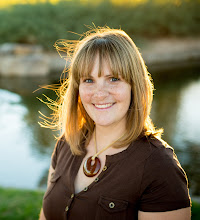Starting in a new class can be a big adjustment because they have to learn a new set of social standards for a completely new situation. As well as learning academic skills, the children are also learning how to behave in a classroom. They are working on how to be a friend and a student.
We will focus on four major areas of development in the class:
1. Social/Emotional
2. Language and Literacy
3. Mathematics
4. Physical/Health and Safety
Below is a detailed list of the standards we will work on in class. The list will be modified for the 3 year old class. This list is not all inclusive. It is the basic guideline of what we will work on in class. This list was generated using the Utah State Office of Education Prekindergarten guidelines.
Social/Emotional
· Knows first/last name & age
· Knows parents/caregivers first names
· Knows friends names
· Participates in activities voluntarily
· Asks for help when needed
· Stays on task as appropriate to the activity
· Responsible for job assignments
· Expresses feelings and emotions through language
· Takes turns
· Shares
· Follows rules
· Uses correct behavior in different environments
· Identifies own emotions & feelings
· Uses materials correctly, safely & respectfully
Language and Literacy
· Responds appropriately to questions
· Listen and follows directions
· Connects information and events with real life experiences
· Uses language to play and create
· Speaks in simple sentences of varying length
· Speaks clearly
· Participates in discussions
· Uses visual and verbal information to understand new words in a story
· Uses descriptive words: (know colors, shapes, size, etc.)
· Understands opposites
· Answers questions when asked
· Recognizes letters in different print (e.g. magazines, posters, logos, menus, keyboards, etc.)
· “Reads” book using the words or the pictures
· Recognizes the difference between letters, numbers, and symbols
· Recognizes at least 15 letters
· Understands that letters represent sounds
· Identify the sounds of at least 10 letters
· Knows print is read top to bottom and left to right
· Holds books right side up
· Understands parts of a book (e.g. cover, pictures, title, etc.)
· Begins to recognize word parts (syllables) in simple words
· Identifies beginning sounds of words
· Identify rhyming words
· Writes using scribbles, pretend letters, or known letters
· Reads own writing
Mathematics
· Recites numbers in order from 1 – 20
· Counts objects in groups up to ten
· Creates groups of up to five objects
· Matches equivalent sets of objects
· Determines which group has more
· Sorts objects into groups
· Sequences sounds, motions or objects
· Identifies attributes of 2-D or 3-D shapes
· Creates 2-D and 3-D shapes
· Recognizes shape by name
· Creates designs and arrangements of shapes
· Describes location (e.g. over, under, side, etc.)
· Can name the days of the week
· Understands that calendars show passing of time
· Uses measuring tools informally
· Compares objects
· Collects, counts and compares data
· Creates graphs cooperatively with adults and other children
Physical/Health Safety
· Demonstrates fine motor coordination (small muscle, writing, painting, buttoning, zipping, screwing, scissors, etc.)
· Demonstrates hand-eye coordination (pouring, hitting stationary objects, etc)
· Demonstrates control and balance during gross motor movement (large muscles: jumping, hopping, skipping, walking a line, balancing on one foot, moves isolated body parts, etc.)
· Demonstrates control of large muscles to manipulate objects (throwing, catching, riding wheeled toys, etc.)
· Develops personal hygiene & personal care skills
· Eats food from a variety of food groups
· Identifies healthy and non-healthy foods
· Follows indoor and outdoor safety rules



